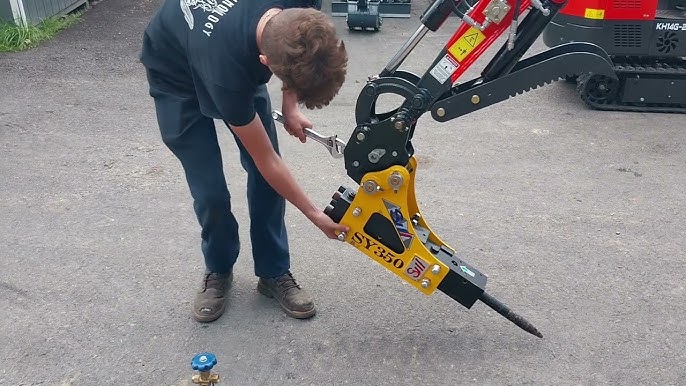Understanding Excavator Tilt Hitches: Types, Specifications, and Maintenance
Excavator tilt hitches are essential attachments that enhance the functionality of excavators by allowing for greater maneuverability and precision. These innovative tools are equipped with a coupling mechanism and a tilting system that enables the arm or bucket of an excavator to tilt or angulate at various angles. In this article, we will explore the different types of excavator tilt hitches, their specifications, maintenance, usage scenarios, and tips on how to choose the right hitch for your needs.
Types of Excavator Tilt Hitches
Excavator tilt hitches can be classified based on their method of operation. The primary types include:
-
Hydraulic Tilt Hitches: These hitches utilize hydraulic systems to facilitate tilting. They offer a customized pin diameter, making them suitable for various excavator sizes and applications.
-
Mechanical Tilt Hitches: Although less common than their hydraulic counterparts, mechanical tilt hitches provide a reliable option for operators seeking straightforward functionality without the complexity of hydraulic systems.
-
Quick Couplers: These are designed for rapid attachment and detachment of different tools, such as buckets or hydraulic breakers, allowing for efficient workflow on job sites.
Specifications and Maintenance
When considering an excavator tilt hitch, it’s crucial to pay attention to several specifications:
- Weight Capacity: Ensure that the hitch can handle the weight of the attachments you plan to use.
- Tilt Angle: Look for hitches that offer a range of tilt angles, typically between 45 and 60 degrees, to enhance versatility.
- Material Quality: Opt for hitches made from durable materials that can withstand the rigors of heavy-duty work.
Maintenance Tips:
- Regular Inspections: Periodically check for any signs of wear or damage to ensure safe operation.
- Hydraulic System Checks: For hydraulic tilt hitches, ensure the hydraulic fluid is at the correct level and that there are no leaks.
- Cleaning: Keep the hitch clean and free of debris, which can interfere with its operation.
Usage Scenarios for Excavator Tilt Hitches
Excavator tilt hitches are utilized in various scenarios, including:
- Grading and Leveling: The ability to tilt allows for precise grading of surfaces, essential in construction and landscaping projects.
- Trenching: Tilt hitches can facilitate accurate trenching by allowing operators to adjust the angle of the bucket as needed.
- Material Handling: When equipped with a quick coupler, operators can switch between different attachments quickly, improving efficiency on the job site.
How to Choose an Excavator Tilt Hitch
Selecting the right excavator tilt hitch involves considering several factors:
- Compatibility: Ensure the hitch is compatible with your excavator model.
- Operational Needs: Assess the specific tasks you will be performing to determine the required tilt angle and capacity.
- Budget: Evaluate your budget versus the features offered by different hitches; sometimes, investing in a higher-quality hitch can save money in the long run by reducing maintenance costs.
Conclusion
Excavator tilt hitches are invaluable attachments that significantly enhance the versatility and efficiency of excavators. By understanding the various types, specifications, and maintenance requirements, operators can choose the right hitch for their specific needs, leading to improved performance on the job site. Whether for grading, trenching, or general material handling, a well-chosen tilt hitch can make a substantial difference in productivity and accuracy.




































